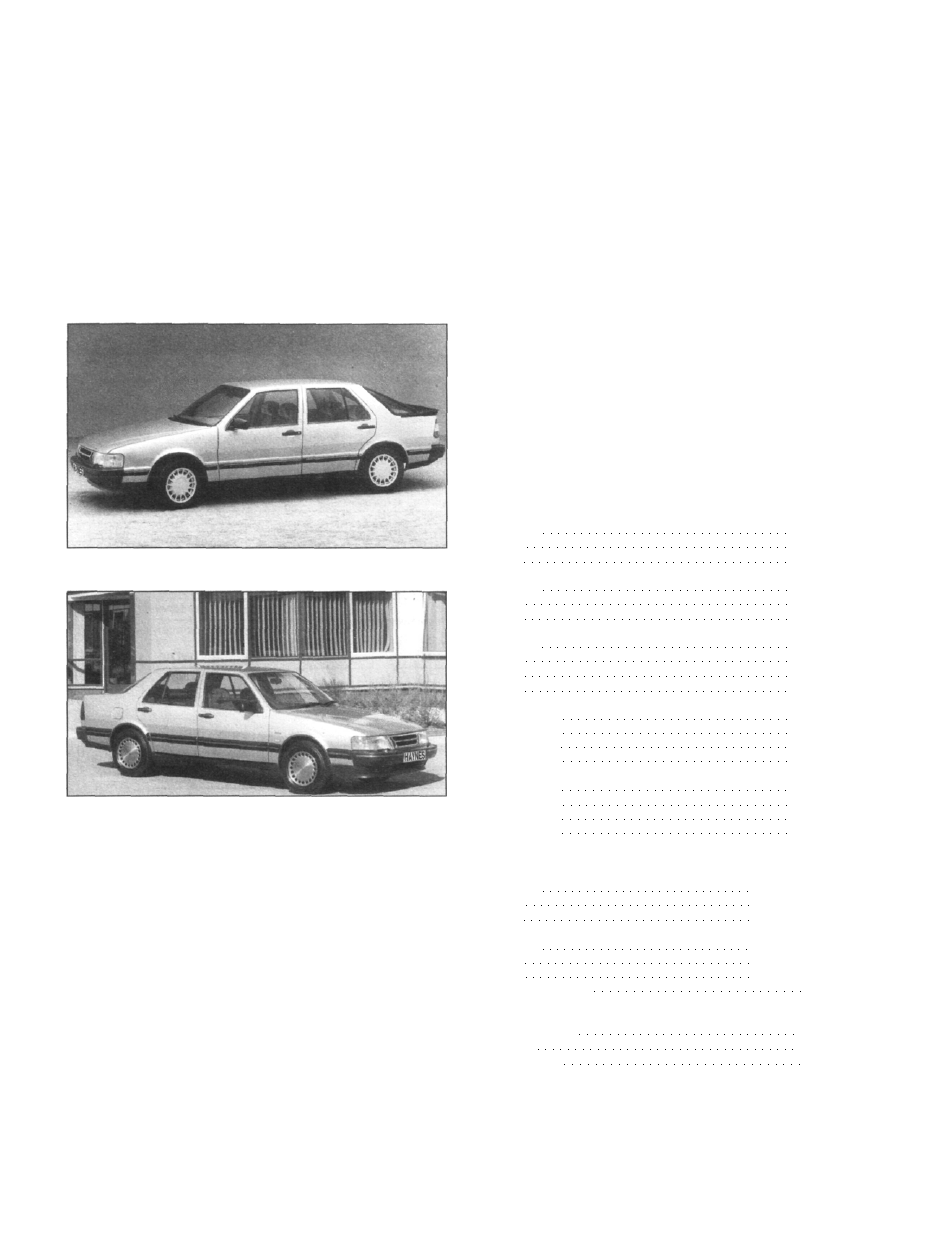Index Saab SAAB 9000 4-cyl 1985 to 1998 (C to S registration) - Service and Repair Manual
|
|
|

0•4 Introduction Introduction to the Saab 9000 The Saab 9000 was introduced in the UK in October 1985 as a 5- door Hatchback, with a turbocharged fuel-injected 16-valve 1985 cc All engines are of 16-valve double overhead camshaft design, the 2290 cc version being introduced in late 1989 on the 9000i and CDi. Initially, a Bosch LH-Jetronic fuel injection system was fitted. The Saab 9000 Turbo 16 Saab 9000 CDi Acknowledgements Thanks are due to Champion Spark Plug, who supplied the illustrations showing spark plug conditions. Thanks are also due to to all those people at Sparkford who helped in the production of this We take great pride in the accuracy of information given in this manual, but vehicle manufacturers make alterations and design from, the information given. Saab-manufactured "Trionic" system fitted to the 2290 cc engine in The engine is mounted transversely, with the transmission mounted on the left-hand side. A five-speed manual transmission or four-speed All models have fully-independent front and rear suspension. The rear suspension incorporates leading and trailing arms, shock A wide range of standard and optional equipment is available within the Saab 9000 range to suit most tastes, including central locking and Provided that regular servicing is carried out in accordance with the manufacturer's recommendations, the Saab 9000 should prove General dimensions and weights Note: All figures are approximate, and may vary according to model. Dimensions Overall length: 9000 5-door 4620 mm Overall width: 9000 5-door 1806 mm Overall height (unladen): 9000 5-door 1430 mm Wheelbase 2672 mm 5.5 inch wheels 1510 mm Rear track: 5.5 inch wheels 1480 mm Weights Kerb weight: 9000 5-door 1390 to 1550 kg Maximum gross vehicle weight: 9000 5-door 1780 to 1960 kg Maximum roof rack load 100 kg Braked trailer: Except 9000 CS 1600 kg Unbraked trailer 750 kg |